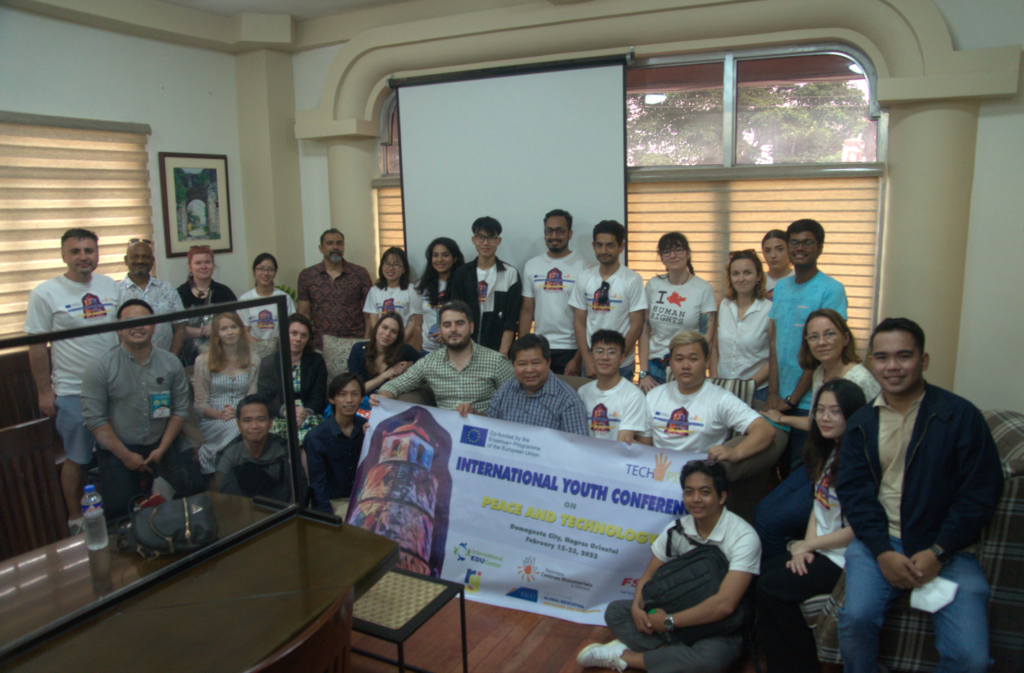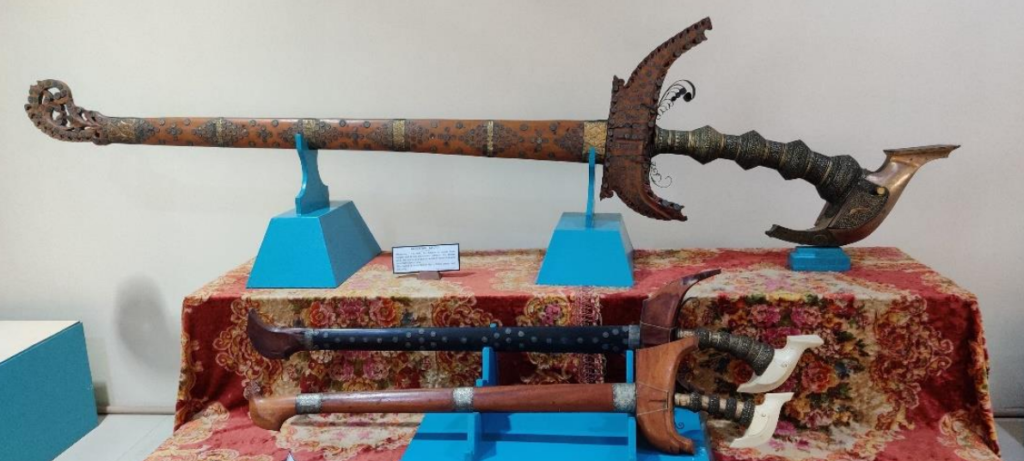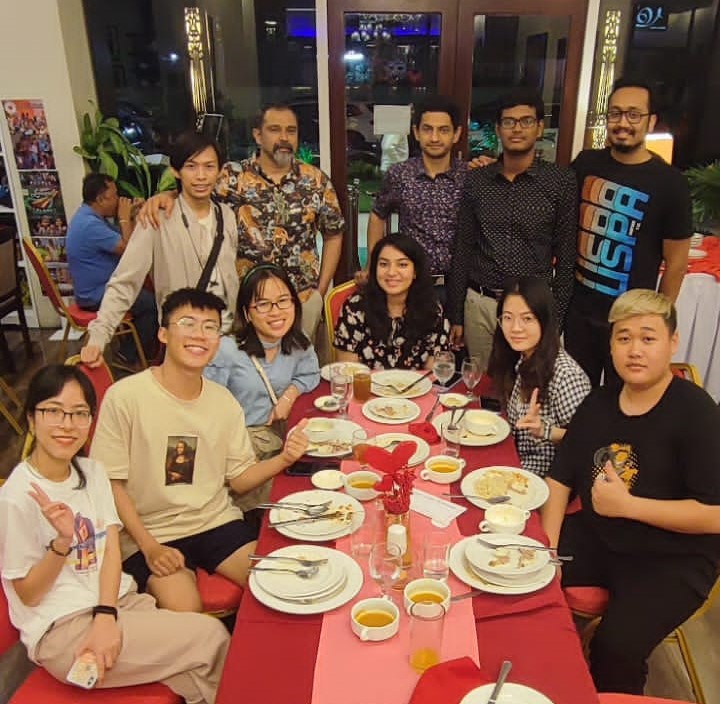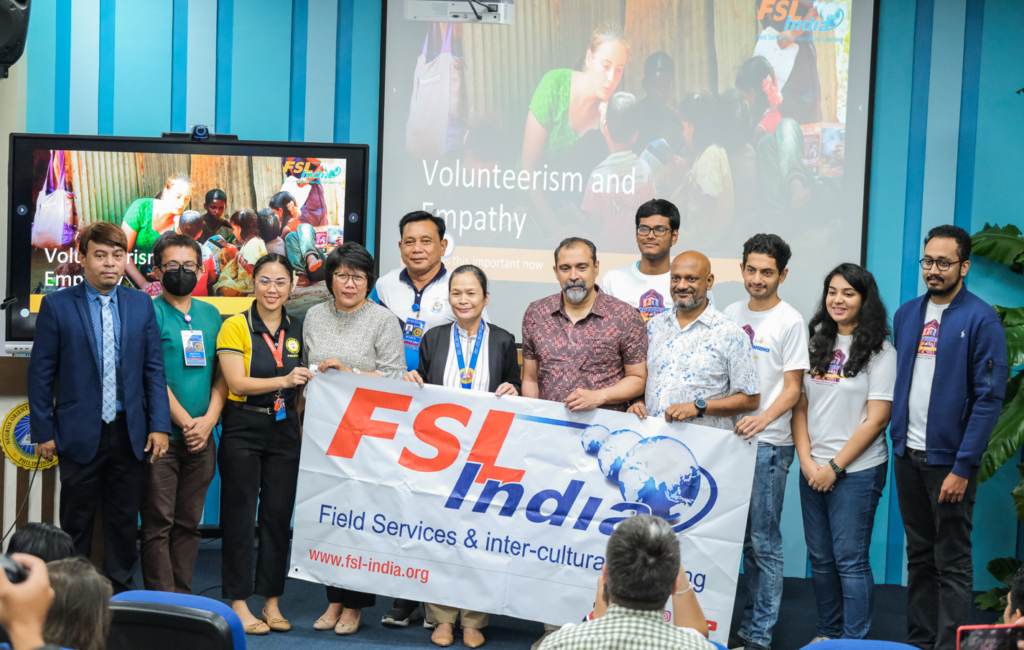Volunteer Voice: My Experience at the International Youth Conference On Peace and Technology
About International Youth Conference on Technology for Peace
On February 13, 27 international delegates from nations like India, North Macedonia, Poland, Romania, Vietnam, and the Philippines arrived in Dumaguete City, Negros Oriental. Participants in the Technology for Peace project, which was funded by the ERASMUS+ initiative of the European Union, attended the International Conference on Peace and Technology. During the course of five days, each participant attended a variety of seminars held by the city’s three partner universities: Silliman University, Foundation University, and Negros Oriental University. During these seminars, we directly engage with students from the host universities to discuss the organisations’ efforts in each nation and how technology may promote peace and development.

The delegates are representatives of various volunteer organisations, including FSL India (India), the Institute for Global Exchange and Internship (Philippines), the Renaissance Youth Leadership Forum (Philippines), the Regional Volunteer Center (Poland), the Regionalne Centrum Wolontariatu (Poland), the Sempre a Frente Foundation (Poland), the TechSoup Foundation (Poland), the International Edu Center (Romania), and the Center for Sustainable Development Studies (Vietnam). The City of Gentle People is the nickname for Dumaguete City. It is also known as a university town or a hub of learning in the south of Philippines because it currently is home to four universities – Silliman, Foundation, Negros Oriental, St. Paul’s.
My Observations about the Filipino Culture
The Philippines has a diverse and vibrant culture shaped by its history and influences from various
ethnic groups and colonizers.
1. Religion: Christianity seemed to dominate with the majority of Filipinos being Roman Catholics.
2. Language: The official languages of the Philippines are Filipino (based on Tagalog) and English.
If you are fluent in English, communication will not be a problem here.
3. Cuisine: Filipino cuisine is a fusion of indigenous, Chinese, Spanish, and American influences. Popular dishes include adobo (a meat stew), sinigang (a sour soup), and lechon (roast pig). Rice is the staple food in the Philippines, and it is eaten with almost every meal. The Philippines is an archipelago, and seafood is abundant. Fish, shrimp, crabs, and other seafood are popular in many dishes. Desserts include halo-halo (a mixture of shaved ice, milk, and various fruits and sweets) and leche flan (a creamy custard dessert). Halo-Halo is served so much that a single person can’t consume it in totality. Unfortunately, the vegan options were very limited and a vegetarian will have a tuff time in Philippines.
4. Arts and Crafts: Filipinos are known for theirncreative and artistic talents, producing handicrafts such as pottery, weaving, and woodcarving. Traditional dances, music, and festivals are also important parts of Filipino culture. We saw examples of these in the museum of Silliman University.

5. History: The Philippines has a complex history, having been colonized by the Spanish, Americans, and Japanese at various points in time. The country’s struggle for independence and its rich cultural heritage are important parts of its national identity. The image below shows the huge sword of one the rulers in Philippines kept at the Silliman University Museum. This sword was a symbol of the emperor’s authority and power.

6. Sports: Basketball is the most popular sport in the Philippines. It is played in schools,
communities, and professional leagues. The Philippine Basketball Association (PBA) is the
oldest professional basketball league in Asia. I was able to observe the popularity of Basketball
owning to the fact that all the restaurants and even the airport TV screen had NBA channels
showing.
7. Dogs and Pets: The Philippines has a large population of street dogs, also known as “aspin” (short for “asong Pinoy,” which means “Philippine dog”). These dogs are typically mixed breeds and are often found wandering the streets, looking for food and shelter. While some street dogs are friendly and approachable, others may be aggressive or wary of humans due to their experiences on the streets. On the other hand, the pet dog population in the Philippines is also significant, with many families owning dogs as pets. Popular breeds include the Labrador Retriever, German Shepherd, and Poodle, among others.
8. Mobile Operting System: The most popular mobile operating systems in the Philippines are
Android and iOS. Android is the dominant operating system in the Philippines, with a market
share of around 90%, while iOS has a market share of around 10%. But, according to my
observation, the percentage of iOS users in Philippines is a lot more than those in India.
Conclusion and Comparison with Indian Culture
India and the Philippines have distinct cultures with unique characteristics. Both Indian and Filipino cultures place a strong emphasis on family values, and the extended family is often an important part of daily life. Both countries have a diverse population with a variety of religions, including Hinduism, Islam, Christianity, and Buddhism, among others. Both cultures value hospitality and welcoming guests with warmth and generosity.
This was evident from the kind of welcome we received from Institute for Global Exchange and
Internship.
India has hundreds of languages, with Hindi being the most widely spoken, while the Philippines has
two official languages, English and Filipino. While both India and the Philippines have a diverse
population of religions, India is predominantly Hindu, while the Philippines is predominantly
Catholic. While Indian cuisine is known for its spicy and aromatic flavors, Filipino cuisine is
characterized by its fusion of Malay, Chinese, and Spanish influences where spices don’t play a big
role. Indian traditional clothing, such as sarees and kurta pajama, differ greatly from the traditional
clothing of the Philippines, which includes barong tagalog and terno. The arts and crafts of both
countries are distinct, with Indian culture having a rich history of intricate hand-woven textiles, and
the Philippines having a history of pottery, weaving, and woodcarving.
By Adrij Sharma (Volunteer, FSL India)

